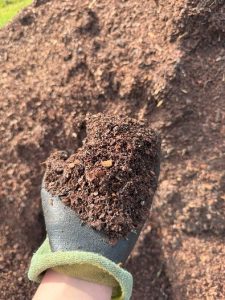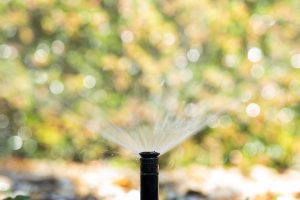Welcome to the Sunshine State! If you’ve recently made Florida your home or if you’re diving into gardening in this unique climate for the first time, you’re in for an adventure. Florida’s summers are famous for their intense heat, humidity, and frequent rainfall, making it a challenging season for traditional vegetable gardens.
But fear not! With some savvy strategies, you can still enjoy a flourishing garden even during the hottest months.
Climate and its Effect on Plant Growth
Climate
First things first, let’s talk about Florida’s climate. Summers here are characterized by a humid subtropical climate, which means native, and exotic (non-invasive) subtropical plants thrive, but traditional plants often struggle in the summer.
Take tomatoes, for example. While they might have thrived in your previous garden, here in Central Florida, where temperatures soar above 90°F, tomato plants can struggle to produce fruit. The stress from the heat can cause them to drop their blossoms, leading to reduced yields. Similarly, spinach and lettuce are prone to “bolting,” or premature flowering, which renders them bitter and unpalatable.
The idea is to plant at the right time, even if it differs from the planting times in other states, for optimal garden health and harvest.
Precipitation
While water is essential for plant growth, too much or too little can lead to disaster for your garden. The tricky part is, there is not a ‘one size fits all’ approach to watering. The best thing to do is check your plants daily to determine if they need to be watered. This will require paying attention to your plants, knowing your its watering requirements, and tracking the natural precipitation your garden receives. Also think about where the plant is – is it in a pot? Potted plants tend to dry out more quickly than in-ground plants. You can use your finger as a moisture sensor to feel how wet the soil is. A good rule of thumb is to reach for 2-3 inches below the surface, while being mindful of the roots. Is it waterlogged? Super dry? Just right? Signs of a wilted veggie plants will have dry, brown or yellow leaves (but yellow leaves can also be a sign of over-watering – is the soil wet or dry, how much have you watered previously?)
Think about:
- The plant’s water requirements
- The type of soil you have, and how it retains water (is it well draining or not?)
- The temperature, light, and humidity the plant is exposed to
- If the plant is in a pot, plant bed, or in-ground
- Is the plant actively growing? Plants that are not in their active growing season need less water.
Keep in mind, roots need air and water to stay happy and healthy, so do not allow plants to sit in wet soil. Watering deeply less frequently as opposed to a little bit every day will encourage deep root growth and resiliency in the plant (keep in mind the water requirements of the plant species). Check the plant label or research the water requirements for the plants in your garden and avoid overhead watering and crowding to promote air circulation and decrease humidity. This will help prevent the infestation of pests and diseases in your garden.
Read more about smart irrigation here: Watering the Vegetable Garden – Gardening Solutions – University of Florida, Institute of Food and Agricultural Sciences (ufl.edu)

Plant for Success
Seasonality is critically important when starting your home garden in Florida. Despite the challenges that come with Florida’s climate, there is still hope for a successful summer garden. Planting the right plant, in the right place, at the right time is essential for happy, productive plants.
The key is to choose heat-tolerance and implement integrated pest and disease management strategies. Lima beans, eggplant, okra, southern peas, peppers, sweet potatoes, and watermelon are all well-suited to Florida’s summer conditions, so choose them instead of tomatoes, peppers, cucumbers, and leafy greens.
Read the first installment of our Spice Up Your Life herb series and A Guide to Growing Tomatoes in Central Florida: Tips for Success – UF/IFAS Extension Pasco County (ufl.edu) to get started!

Things You Should Know
Soil Quality
Florida is known for beautiful sandy beaches and endearing flora, but this means Florida’s soil tends to be sandy and alkaline. Remember, sandy soils do not hold water and nutrients very well. It is a good thing we discussed amendments to improve soil!
Read our blog Starting at the Bottom: Soil and Garden Health to learn more about soil.

Amendments
You may have heard the term. Amendments are important for maintaining the quality of soil. You may consider adding an amendment, or an addition, to improve or maintain your garden soil.
Several factors of your soil including the pH, nutrient availability, soil structure, and health of beneficial microorganisms can benefit from an amendment. Soil amendments are applied or mixed into the topsoil to improve the soil’s properties to support plant growth.
Check out Organic Soil Amendments – Gardening Solutions – University of Florida, Institute of Food and Agricultural Sciences (ufl.edu) for some tips on amending your garden!

Soil Testing
If you don’t already know your soil pH and nutrient content, a great place to start is with a soil test. UF/IFAS provides Soil Testing Services that are affordable and available to the public.
The results will provide valuable information about your soil’s pH, fertility levels and how to amend your soil to achieve an optimal pH range for the specific plant.
Go here for directions and submission details for soil tests at the UF/IFAS Soils Lab.

Soil pH
Soil pH is a measure of how acidic your soil is and it plays a significant role in the growth and survival of your plants. Just like how a balanced pH is essential for our bodies, plants also thrive when their soil pH is within the right range.
Most vegetables prefer slightly acidic soils, with a pH range of 5.5-6.5. If your soil’s pH is too high or low, your plants won’t be able to absorb nutrients effectively, no matter how much fertilizer or water you provide. This means less growth and less fruits and veggies from your garden.
To read more about how to determine your soil’s pH and how to manage it, read our blog!
Fertilizers
You know, those nutrient boosters that often get mistaken for plant grub? The official definition is “any material, organic or inorganic, natural or synthetic, which supplies one or more of the chemical elements required for the plant growth.”
Okay, that’s a little formal. Simply put, fertilizer is not plant food (they make their food!); its plant nutrients – like sulfur, calcium, nitrogen, etc. – required for the plant to grow, develop, and reproduce. There are different sources of nutrients that plants can use. It’s sometimes hard to know what to apply since there are so many options.
Read our Fertilizer Fundamentals series to learn more!
- Fertilizer Fundamentals: How to Choose the Right One – UF/IFAS Extension Pasco County (ufl.edu)
- Fertilizer Fundamentals: How to Apply Fertilizer – UF/IFAS Extension Pasco County (ufl.edu)
- Fertilizer Fundamentals: The Best Time to Fertilize – UF/IFAS Extension Pasco County (ufl.edu)
The Florida-Friendly Landscaping™ Guide
The nine principles of Florida-Friendly Landscaping™, including right plant, right place, watering efficiency, and responsible pest management, provide valuable guidance for sustainable gardening practices.
The Florida-Friendly Landscaping™ Guide to Plant Selection & Landscape Design can help you choose the right plant for the right place. You can order a free copy on the Southwest Florida Water Management District’s website.

Tips for the Floridian Gardener
Ready to get started? Here are a few tips to help you prepare your garden:
- Choose Heat-Tolerant: Opt for varieties that can withstand the summer heat and humidity. These include the crops mentioned above, as well as others like cucumbers, squash, and cherry tomatoes.
- Timing: Planting your crops at the right time of year so ensure they thrive and produce a good yield. For more month-by-month gardening tips, check out Florida Gardening Calendars.
- Implement Pest and Disease Prevention: Regularly inspect your plants for signs of pests and diseases. Consider using low to no-toxicity pest control methods like companion planting, and insecticidal soaps to keep pests at bay. Don’t be afraid to get your gardening gloves dirty and manually remove and dispose of insect pests.
- Provide Adequate Watering: While Florida’s summer rains can be plentiful, it’s essential to monitor soil moisture levels and water your plants accordingly. Aim for deep, watering once a week to encourage healthy root growth and prevent over-watering. Stay updated on your city or counties water regulations, check your local government website or call for more information.
- Mulch and Shade: Mulching helps retain soil moisture and regulate temperature, while providing shade can protect sensitive plants from the scorching sun. The lack of sunlight will keep the weeds from popping up as well. Choose mulch such as pine needles, pine bark, and straw and avoid cypress which is not sustainable nor Florida-Friendly.
- Stay Informed: Keep an eye on weather forecasts and stay informed about common pests and diseases in your area. Knowledge is power when it comes to successful gardening! The UF/IFAS Extension Fact Sheets and publications available online take the guess work out of pest and disease control.
To read about Best Management Practices, click here.

Conclusion
With these tips in mind, you’re well on your way to enjoying a bountiful summer harvest in your Florida garden.
For more information and resources on heat-tolerant crops and garden preparation, check out our guide here. Happy gardening!
Supervising agent: Dr. Whitney Elmore County Extension Director, Urban Horticulture Agent, and Master Gardener Coordinator
Have a question?
If you have any questions about gardening in Central Florida, please contact the UF/IFAS Extension Pasco County at 352-518-0156. For more information on UF/IFAS Extension Pasco County Community Gardens, and how you can join one, visit http://sfyl.ifas.ufl.edu/pasco/.
Follow us!
We have several ways to connect. Visit our Facebook, Instagram, Eventbrite, Blogs, Florida-Friendly Facebook, Website
More from UF/IFAS Gardening Solutions:
- Gardening Solutions – University of Florida, Institute of Food and Agricultural Sciences (ufl.edu)
- Florida Gardening Calendar – Solutions for Your Life – University of Florida, Institute of Food and Agricultural Sciences – UF/IFAS (ufl.edu)
- Vegetable Gardening in Florida Series – Gardening Solutions – University of Florida, Institute of Food and Agricultural Sciences (ufl.edu)
 3
3
